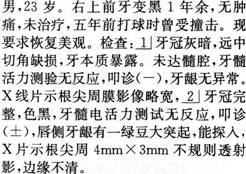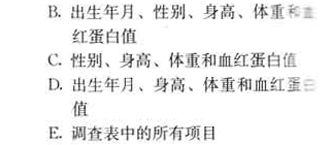共用题干
Albert Einstein's Brain
1.It doesn't take an Einstein to recognize that Albert Einstein's brain was very different from yours and mine.The gray matter housed inside that shaggy head managed to revolutionize our concepts of time,space,motion一the very foundations of physical reality一not just once but several times during his astonishing career. Yet while there clearly had to be something remarkable about Einstein's brain,the pathologist who removed it from the great physicist's skull after his death reported that the organ was,to all appearances,well within the normal range一no bigger or heavier than anyone else's.
2.But a new analysis of Einstein's brain by Canadian scientists,reported in the current Lancet, reveals that it has some distinctive physical characteristics after all. A portion of the brain that governs mathematical ability and spatial reasoning一two key ingredients to the sort of thinking Einstein did best一was significantly larger than average and may also have had more interconnections among its cells,which could have allowed them to work together more effectively.
3.In 1996,Harvey gave much of his data and a significant fraction of the tissue itself to Dr. Sandra Witelson,a neuroscientist who maintains a"brain bank"at McMaster for comparative studies of brain structure and function.These normal,undiseased brains,willed to science by people whose intelligence had been carefully measured before death, gave Witelson a solid set of benchmarks against which to measure the seat of Einstein's brilliant thoughts.Not only was Einstein's inferior parietal region unusually bulky the scientists found,but a feature called the Sylvian fissure was much smaller than average.Without this groove that normally slices through the tissue,the brain cells were packed close together,permitting more interconnections一which in principle can permit more cross-referencing of information and idea, leading to great leaps of insight.
4.That's the idea,anyway.But while it's quite plausible according to current neurological theory,that doesn't necessarily,make it true.We know Einstein was a genius,and we now know that his brain was physically different from the average.But none of this proves a cause-and-effect relationship."What you really need,"says McLean's Benes,"is to look at the brains of a number of mathematical geniuses to see if the same abnormalities are present."
5.Even if they are,it's possible that the bulked一up brains are a result of strenuous mental exercise,not an inherent feature that makes genius possible.Bottom line:we still don't know whether Einstein was born with an extraordinary mind or whether he earned it,one brilliant idea at a time.
We don't know whether Einstein________.
A:that doesn't necessarily make it true
B:the cells of mathematics
C:was born with an extraordinary mind or he earned it
D:allow the cells work together more effectively
E:is the same as the averages in size and weight


 正确的诊断是
正确的诊断是 查看材料
查看材料

